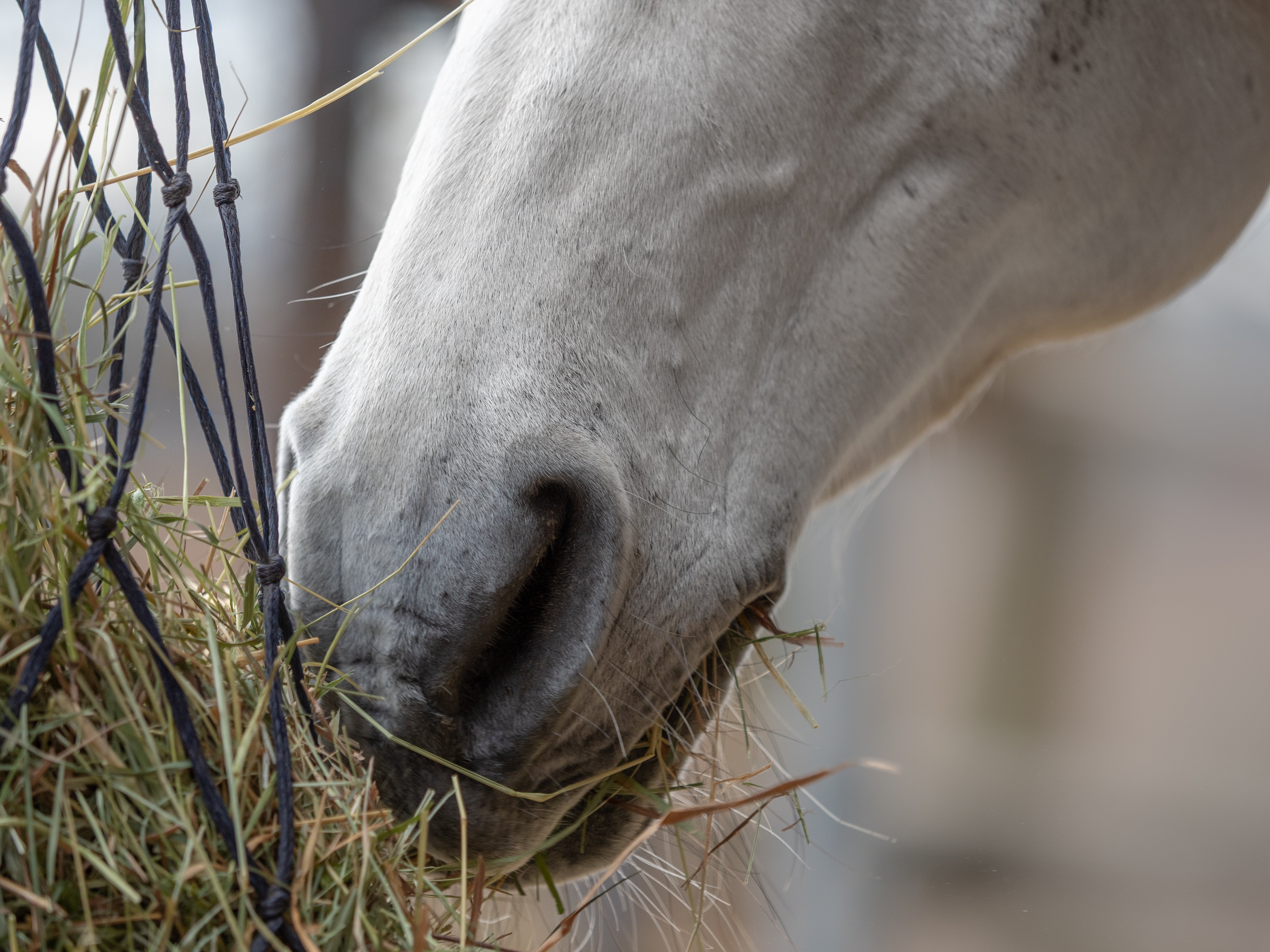Tips for Stress-Free Horse Show Preparation
1 min. read time
Audio version – listen to this article easily
Equestrians and horse people often claim that “If my horse is happy, then so am I”. However, when are our horses satisfied or even happy and when should we as horse owners start to improve?
Horses used to live in large herds in the steppe and are still referred to as steppe animals or gregarious animals. Even though horses have been domesticated for the past 7.000 years and have adapted more and more to the circumstances they found themselves in, they are happiest in an environment that is as close as possible to their natural habitat.
Now what can we do to keep our horses as appropriately as possible, to offer them a happy life in which they are happy partners to us, both in terms of sports and in the recreational context?
We should offer our horses as much fenced run areas and exercise as possible. Horses should live in a herd structure where they can develop their own natural hierarchy. Horses live most naturally in open stables; although this is not necessarily the best option for all horses and frequently presents organisational problems for owners who have to care for their horses on their own. Thus, most horses live in riding stables with individual boxes or paddock boxes. In this context it is important that the horses have enough fenced run areas to exercise in and that the boxes are sufficiently large and well-lit. Social contacts among stable mates should be possible.
Our horses, due to their former life in the steppe, need a lot of raw fibres. If possible, horses should always have access to roughage, preferably high-quality hay. Hay nets are suitable for boxes and hay racks for paddocks and open stables. The nutritional needs of horses - depending on the performance and the requirements - should be covered by concentrated feed, mineral feed, and possibly by supplements. Please remember, though: the amount is crucial. A lot does not always help a lot. Thus, it is imperative to determine the nutritional requirements of the horse and its intake of nutrients by eating hay as precisely as possible in order to be able to specifically supplement these nutrients and to make sure that the horse receives neither too much nor too little.

Basically, please remember that: Horses are animals on the move. The more exercise the better. This, at least, is true of the fenced run areas. As far as training goes, this has to be adapted to each individual horse. Make sure not to ask too much or too little from your horse. The training should be as versatile as possible. Dressage horses, for instance, will love the diversion of doing pole work (cavaletti) to improve gymnastic ability; and jumpers, by way of variety, will profit from dressage exercises when manoeuvring through a show jumping course. With all this training, however, never forget to give your horse a day off for a change, to do some enjoyable and relaxing trail riding, or to allow your horse to canter happily straight ahead.
Let us be honest: All of us prefer people around us that we like and find it easy to interact with - isn’t it true? This is equally true of our horses. The better the relationship between people and their horses, the happier the horses will be to cooperate, creating much higher motivation. Only by understanding our horses and by putting ourselves in their place can we detect even smallest signs of discontentment. We should be aware of when to shift into a lower gear or when it is better not to challenge the horse to its limits. We should never punish our horse for making mistakes, but instead find fault with ourselves; and when things are going well, then we should praise our horse by expressing recognition and reward. This doesn't mean, however, that our friend needs a treat each and every time this happens. It is often quite enough to praise the horse by patting its neck or by running one’s fingers through its mane.
So, if you suspect that hour horse is not entirely content, then please think about it and try to find out why. Is it possible that your horse’s surroundings are less than perfect, could it be the feeding and thus possible discomfort due to stomach problems etc.? Is your horse unable to take the pressure during training, or are the two of you simply out of sync at the moment? Try and find the causes of your horse’s dissatisfaction and remedy the problem as soon as possible. Your horse will be grateful to you, and you will certainly notice this!
On our topic page you will find a lot more information and links on the topic of gastric ulcers in horses. The possibilities for the prevention of gastric ulcers in horses are also described here.
Equine 74 Gastric
Buffers the excess acid in the horse's stomach instead of blocking it.
Equine 74 Stomach Calm Relax
Supports the nervous horse stomach in stressful situations.